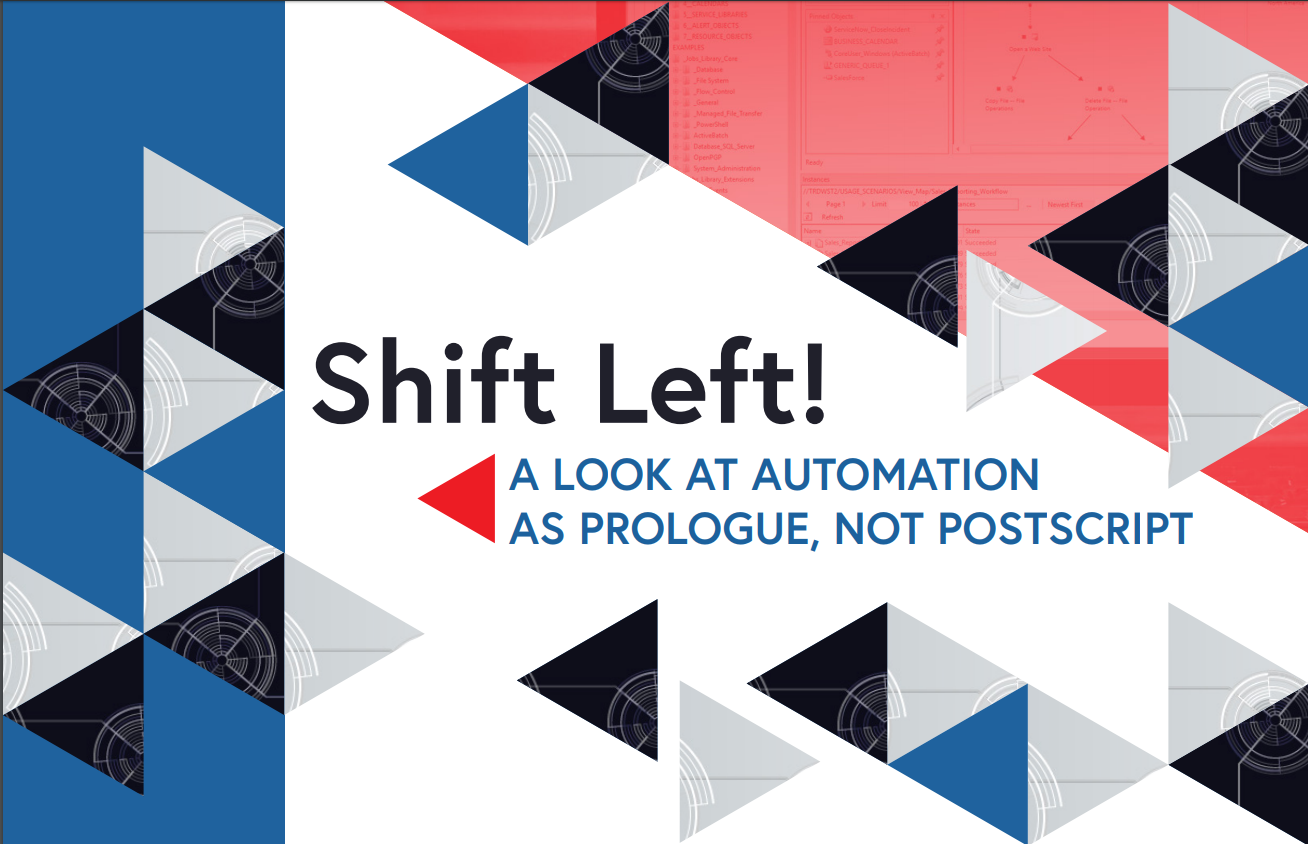Gartner Symposium/ITxpo (Orlando) Recap
ContinuousNEXT, a new digital transformation strategy that focuses on customer-centricity, was the topic for Day 2 of the Gartner Symposium/ITxpo 2018.

The 2018 Gartner Symposium/ITxpo was held in the Walt Disney World Resort in Orlando, Florida.
Gartner Symposium/ITxpo is an annual series of conferences held around the world. From Orlando to Barcelona to Tokyo, the conferences are attended by CIOs, senior IT leaders, and market-leading vendors, all of whom converge to listen to and to learn from the best minds and thought leaders in IT.
This year, Gartner Symposium/ITxpo’s capstone event was held in Orlando, Florida, attracting over 9,000 IT leaders for five days of insights, networking, and keynotes. The event, held October 14-18, featured executive Gartner analysts, guest speakers, and over 350 sessions covering business strategy, leadership, and technology and information.
These three themes (business strategy, leadership, and technology and information) were essential to the Gartner Opening Keynote on Day 2 of the event.
ContinuousNEXT
Gartner recently unveiled its ContinuousNEXT strategy, an approach to digital transformation that focuses on customer-centricity, innovation, and adaptation to constant change. At the Symposium/ITxpo in Orlando, Gartner Executive Vice President, Research & Advisory, Mike Harris, spoke about ContinuousNEXT in the Gartner Opening Keynote, explaining how CEOs are anticipating “business model change, frequently due to digital transformation, and investors are encouraging that change.”
“They are not just interested in data —which is now old news— they are interested in what you do with data through advanced analytics and artificial intelligence,” continued Harris. “Leaders apply technology and information in unique and creative ways to outperform their peers. It’s what distinguishes them from the rest, and that’s where ContinuousNEXT comes in.”
We caught up with Gartner EVP, Mike Harris on what he wants you to take away from this mornings #GartnerSYM keynote. #CIO #BehindTheScenes pic.twitter.com/jq8ogjxUUT
— Gartner Symposium (@Gartner_SYM) October 15/18
A ContinuousNEXT strategy is founded on five imperatives:
1) Privacy
Trust is inherent to business success, and today, consumer trust is contingent on how private information and data are being used, stored, and secured. Which means that CIOs and IT leaders are crucial to building and maintaining consumer trust. Privacy concerns don’t just need to be addressed, they need to be goals that are essential to planning, development, and operations.
“This typically means putting someone in charge of a privacy management program, detecting and promptly reporting breaches, and ensuring that individuals have control of their data,” said Harris. “This is a board-level issue, yet barely half of organizations have adequate controls in place.”
If you don’t successfully manage privacy, your entire #digital transformation is at risk says Gartner EVP, Mike Harris at #GartnerSYM pic.twitter.com/UsTvIojsgq
— Gartner (@Gartner_inc) October 15/18
2) Augmented intelligence
Artificial intelligence will lead to augmented intelligence, which is defined as people being aided by both integral and supplemental forms of AI. Augmented intelligence is a hopeful counterpoint to popular fears about AI kicking everyone out of work; instead, Gartner expects that AI will augment and greatly enhance the workforce as workers utilize AI to make “those jobs more meaningful and rewarding,” explained Harris.
3) Culture
Culture must become dynamic. For an organization to embrace a ContinuousNEXT strategy, it must have a culture that’s capable of making many small changes, quickly. For example, if a CIO feels he or she is spending too much time in status meetings, they should quickly cancel and replace those meetings with brief, written updates; or, if a meeting isn’t aligned with the digital strategy, it should be cancelled.
However, improving culture isn’t just about cancelling meetings. As Gartner Research VP and Distinguished Analyst, Kristin Moyer, explained, improving culture must include tackling aversions to failure and facilitating quicker decision-making.
“Hack your culture to change your culture,” said Moyer. “It’s about finding vulnerable points in your culture and turning them into real change that sticks. Hacking is about doing smaller actions that usually get overlooked. Great hacks also trigger emotional responses, have immediate results, and are visible to lots of people at once.”
Gartner’s Moyer highlights 10 culture hacks #Gartner_SYM pic.twitter.com/YtRN0EZVB7
— Gartner Symposium (@Gartner_SYM) October 15/18
4) Product management
“Digital product management isn’t just a different way of doing IT, it’s a different way of doing business,” explained Gartner Research VP and Distinguished Analyst, Mark Raskino.
Digital product management is a product-centric focus for IT, requiring continuous devops and constant (at least weekly) product updates. This sounds like a wide divergence from traditional, project-oriented IT, but consider Gartner’s 2019 CIO Agenda survey which found that 78% of top-performing CIOs had implemented product-centric delivery. As digital transformation continues to take shape, IT needs to manage digital products more than it delivers IT projects.
“Today’s most powerful companies have fused digital technology into products to create a new management practice,” explained Raskino. “For example, nobody asks Amazon whether it’s a retailer or a tech company. Telsa is a tech company in the automobile industry, and Apple is a tech company that’s now in the health industry. Digital technology and product innovation are becoming indivisible in all industries. That’s why digital product management supersedes IT project management.”
Meaning, product management is critical to the ContinuousNEXT approach.
Gartner’s @MarkRaskino says digital product management is a core imperative of ContinuousNEXT & accelerating adoption means that if CIOs don’t start soon, they may never catch up #GartnerSYM pic.twitter.com/iahWwgq8pj
— Gartner Symposium (@Gartner_SYM) October 15/18
5) Digital twins
Fueled by developments in IoT and big data, digital twin technology has been quickly evolving. So much so, that digital twins aren’t reserved for physical objects, but can be applied to organizations, too. Digital twins are real-time models of the systems and processes within organizations, allowing leaders to better understand how employees, customers, and technology interact. As this technology evolves, IT leaders can expect digital twins to replicate entire organizations.
“In a DTO (digital twin organization), you start with a real-world environment with real people and machines doing work together,” explained Gartner Research VP, Helen Huntley. “This generates continuous intelligence about what is happening in real-time. It allows CIOs to model different scenarios, choose one, and then make it real in the physical world.”
Digital twin technology is still relatively new, but Huntley is confident digital twins will soon be able to virtualize entire organizations in real time. Regardless of how quickly this technology will evolve, today, digital twins are offering powerful models for IT business continuation, data security, and product testing.
A Digital Twin of myself? Gartner opening keynote #GartnerSYM pic.twitter.com/lxmMxJ0wEM
— HelenHuntley-Gartner (@helenahuntley) October 15/18
Did you attend the Gartner Symposium/ITxpo in Orlando? How about the Symposium/ITxpo in Barcelona? Advanced Systems Concepts was sponsor and vendor at both —let us know how you enjoyed the conferences, and if there was anything you missed at our demos.








